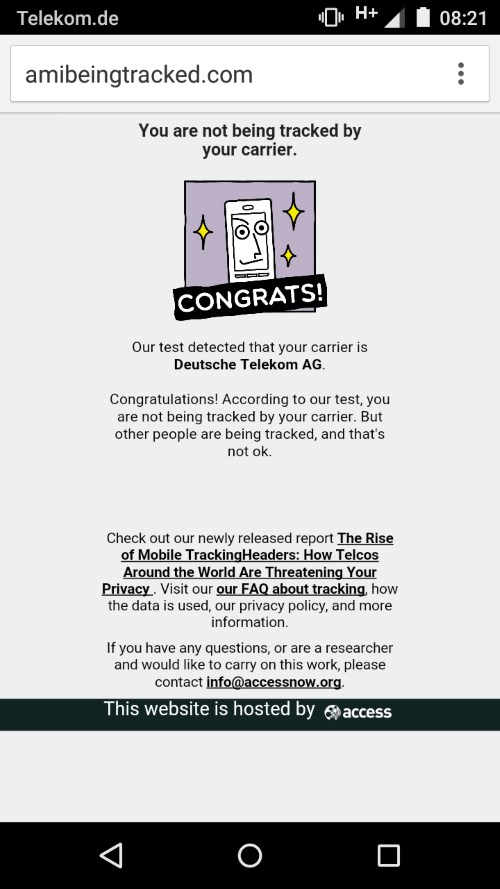Are you being tracked by mobile carrier injected Tracking Headers?
Mobile Internet is still on the rise and used by hundreds of millions of people around the globe to access the Internet. Mobile advertising is on the rise as well and with it comes the desire to track users to improve its effectiveness.
One way of doing that is to use data provided by mobile carriers. Back in 2014 it became known that two large mobile carriers from the United States -- Verizon and AT&T -- were injecting special tracking headers to mobile connections of their customers which advertisers could use to track users across the Internet by identifying them using provided data about customers.
It is nearly impossible for customers to tell if headers are injected when they connect to services, websites or other Internet resources as this happens on the network level.
Carriers receive all requests that users make when connected to their network. Carriers who inject tracking headers add a unique identifier to the (HTTP) request automatically before the connection to the actual resource is completed. The resource can then use the unique identifier to track users across the Internet.
![]()
Even more problematic than that is that advertisers can pay to access data profiles of customers provided by the carrier.
The information can be used to change content on the page or redirect users to a different page altogether.
![]()
The research paper "The Rise of Mobile Tracking Headers: How Telcos Around the World Are Threatening Your Privacy" a0a7cea86cc5eee2d1_kjm6ig8y3.pdf (436 downloads) by the Internet rights organization Access highlights that tracking started much earlier than 2014.
Am I Being Tracked is an online tool that Access' researchers created for the study to find out how widespread the injection of tracking headers really is.
Simply visit the website using your mobile device, turn off WiFi if it is turned on, and click on the test now button.
The service returns whether your mobile carrier is injecting headers to connections you make or not.

Here is how it works:
- You visit the Am I Being Tracked website on your mobile.
- The service checks if you are connected using 3G, 4G or LTE.
- It tries to match the IP address with publicly available information to determine the carrier.
- It analyzes the headers to find out if custom headers are injected.
- If that is the case, the headers are logged in the database.
- Results are displayed to the user.
Key Findings of the study
- Carriers in 10 countries, including the United States, Canada, Mexico, China, the Netherlands, Spain and China, use tracking headers.
- The most tracking occurred in the US followed by Spain and the Netherlands.
- Of all tested connections on the Am I Being Tracked website, 15.3% were being tracked by tracking headers.
- Some tracking headers may leak vital information such as phone numbers.
Mobile users have several options to prevent this from happening. First, all connections to secure sites (HTTPS) are not modified by carriers. While that is helpful, it leaves all regular (HTTP) connections vulnerable.
The use of a virtual private network puts an end to tracking and is currently the best option to block mobile carriers from injecting tracking headers.
Last but not least, you may want to consider switching to a carrier that is not injecting headers.
Now You: Are you being tracked by your mobile carrier?